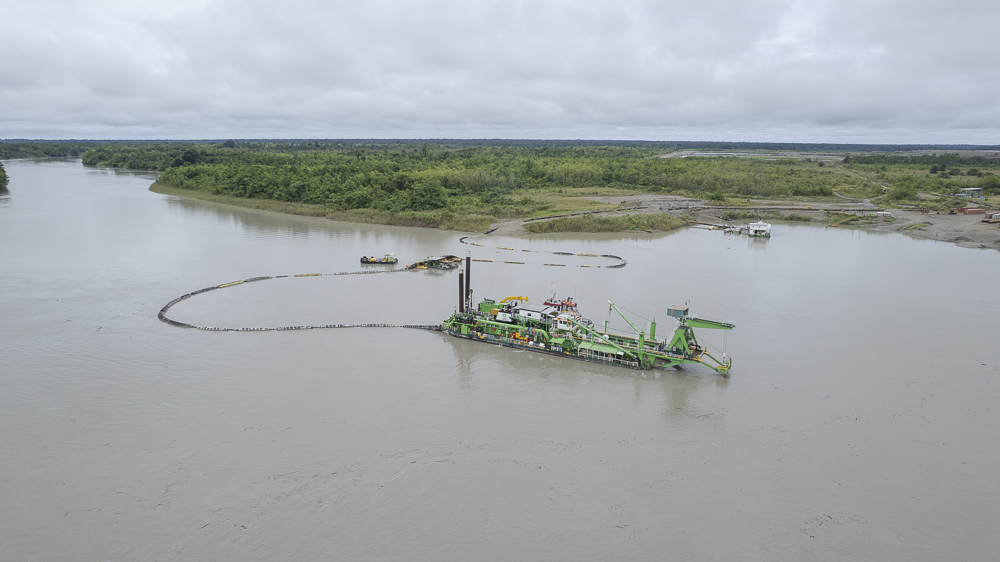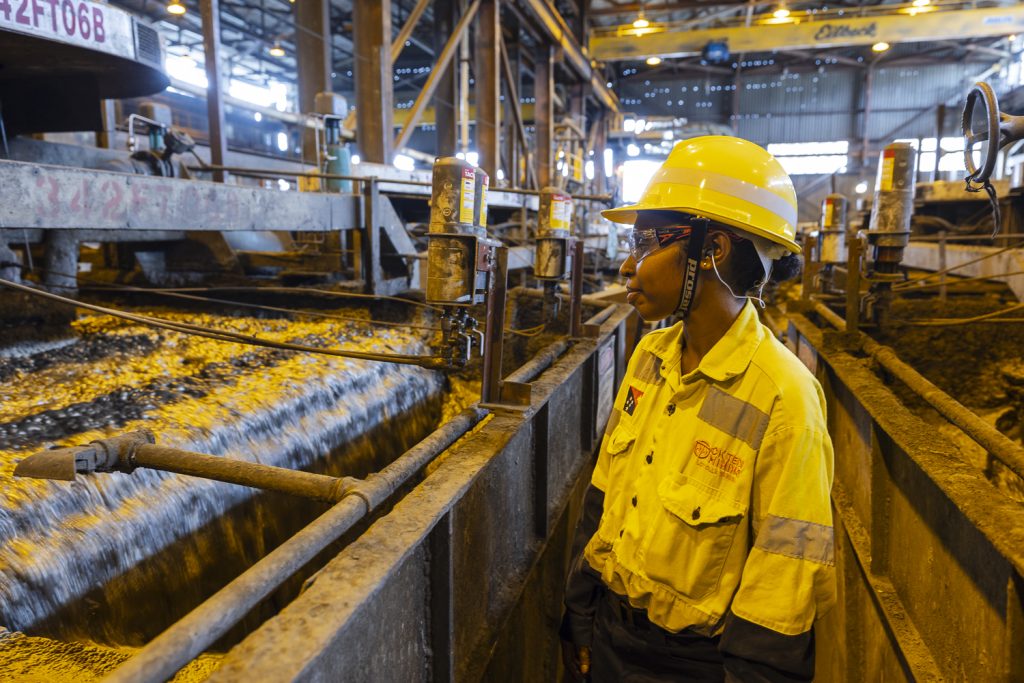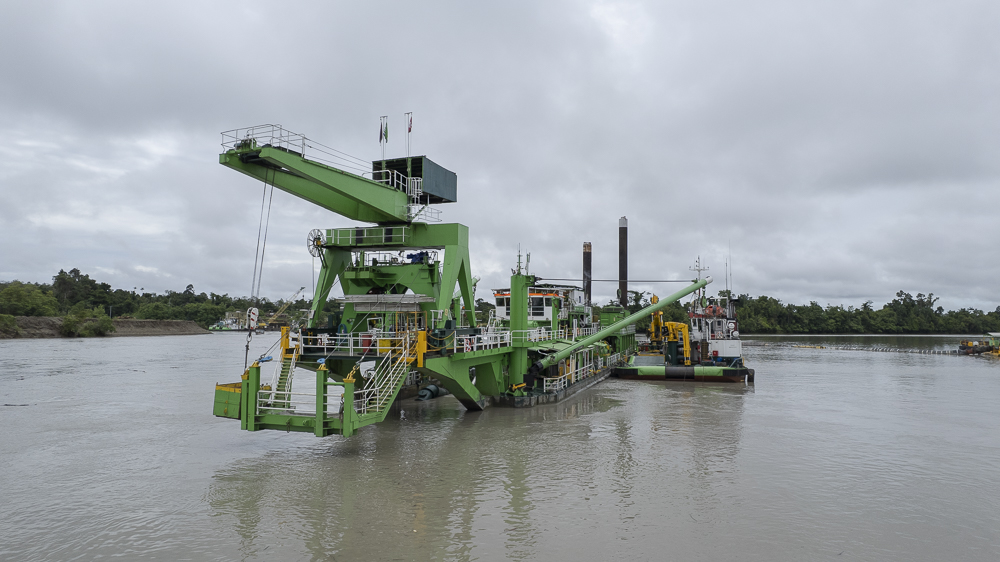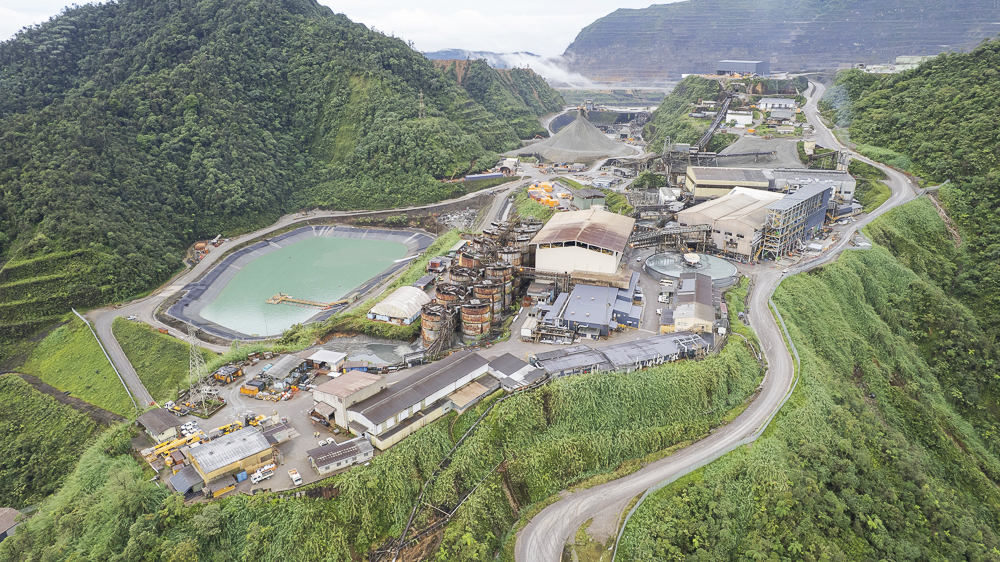
Tailings management
The riverine discharge of tailings continues to be the most substantial long-term environmental challenge for Ok Tedi.
We understand the significance of riverine tailings disposal and have taken significant steps to minimise, mitigate and remediate environmental impacts.
Sulphide Removal
Since 2008, Ok Tedi has taken all tailings from the Mount Fubilan mine through an additional process, sulphide extraction, with the goal of removing sulphides such as pyrite to reduce resulting acidity risk.
No other large-scale mining operation has implemented sulphide separation at this scale.
Our Tailings Pyrite Plant (TPP) pumps the tailings through an additional set of flotation cells which extract most of the remaining sulphides, primarily pyrite, from the tailings stream.
The pyrite concentrate (PCon) slurry is then piped over 125km to storage pits on the West Bank of the Ok Tedi River at Bige where it is permanently stored in specially engineered structures.
The storage pits have been excavated to such a depth so that the PCon is deposited below the natural water table; this keeps the PCon fully submerged, reducing oxygen ingress and preventing the formation of acid from sulphide oxidation.
Once full, the pits are capped with sands dredged from the river as part of our tailings management process and eventually revegetated.
The removal of significant quantities of pyrite materials, along with the addition of limestone to the crusher at the beginning of processing, has significantly minimised the risk of sulphuric acid generation and reduced the acid rock drainage into the riverine system.

Disposal & Dredging
After sulphide removal, the remaining material is disposed of via discharge into the river system, as approved by the Government in 1986.
The barren sands are pumped from the processing plant, down a 1.5km pipeline through the mine wall to eventually be discharged into tributaries of the OK Tedi river.
The discharged sands are held in suspension as they move down river through fast-flowing streams, until they reach a calmer part of the river at Bige, just upstream of the Fly River junction.
As the river slows over a dredged channel, the larger sand particles settle and are deposited onto the riverbed.
This sediment is then dredged and pumped ashore into storage stockpiles, removing approximately 85% of the sand that reaches the site and preventing congestion of the waterways.
The stockpiles, located on both the East and West Banks of the Ok Tedi River at Bige, have been specifically engineered to provide long term, secure storage of the tailings deposits which can then be safely revegetated.
The dredging program has successfully lowered the riverbed level of the Lower Ok Tedi, assisting the recovery of riverbank vegetation and minimising future physical impacts of tailings disposal.
To learn more about our revegetation process and our efforts to protect the Ok Tedi River System, see Environmental.

New Tailings Storage Facility
With the development of our 2050 Vision and extended mine life, Ok Tedi has commenced studies into building a Tailings Storage Facility (TSF) that would remove the need for riverine tailings disposal in the Mount Fubilan supply chain.
The proposed TSF would be built on lowlands close to the mine and receive tailings via pipeline, storing it in shallow engineered structures.
While this project is still in the planning stage, we are eager to take this next step on our sustainability journey.

